Maui may be universally known as home to the world’s largest dormant volcano, migratory Humpback whales, and some of the most stunning beaches on the planet.
But the Valley Isle is about far more than swaying palms and tiki-lit luaus. Also home to some of the most fertile lands in the U.S., a large swath of its 727 square miles serve as lush territory for growing some of the world’s top crops, from coffee to sugar and corn—and “Big Ag” companies, long ago, took note.
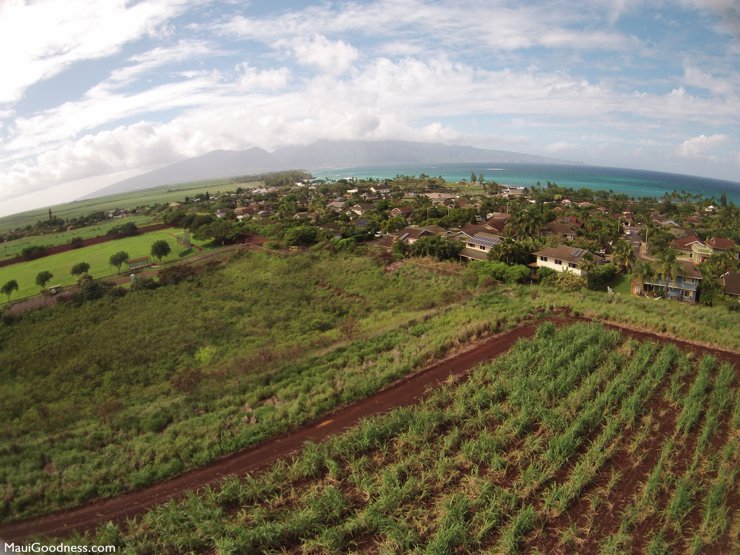
Chief among those companies was Monsanto. Headquartered in St. Louis, Missouri, the agricultural biotechnology and multinational agrochemical company is broadly known as the principal producer of genetically engineered seeds and the crops they produce. One of five agricultural groups to artificially manipulate crops—that is, utilizing DNA from other species to achieve a desired trait in a plant— Monsanto is liable for being part of a sweep in the mid-1990s that ultimately resulted in the presence of GMOs in the majority of America’s processed foods, which include ingredients from corn, soy, and sugar beets.
But to be clear: What is a GMO?
According to the World Health Organization, genetically modified organisms “can be defined as organisms (i.e. plants, animals or microorganisms) in which the genetic material (DNA) has been altered in a way that does not occur naturally by mating and/or natural recombination. The technology is often called “modern biotechnology” or “gene technology”, sometimes also “recombinant DNA technology” or “genetic engineering”. It allows selected individual genes to be transferred from one organism into another, also between non-related species. Foods produced from or using GM organisms are often referred to as GM foods.”
Derivatives of these—from corn starch to high fructose corn syrup and soy protein—are made from GMO crops, and are found in numerous, ubiquitously-consumed foods (with the food industry reporting to NBC News that 75-80% of foods contain genetically modified ingredients). In short, they’re present in our sweetened drinks, our milk, our meat, our corn flakes, and our French fries—to name just a few. Indeed, as The Huffington Post puts it, many of us have been eating GMOs for a good, long while:
“Genetically modified material sounds a little bit like science fiction territory, but in reality, much of what we eat on a daily basis is a genetically modified organism (GMO).”
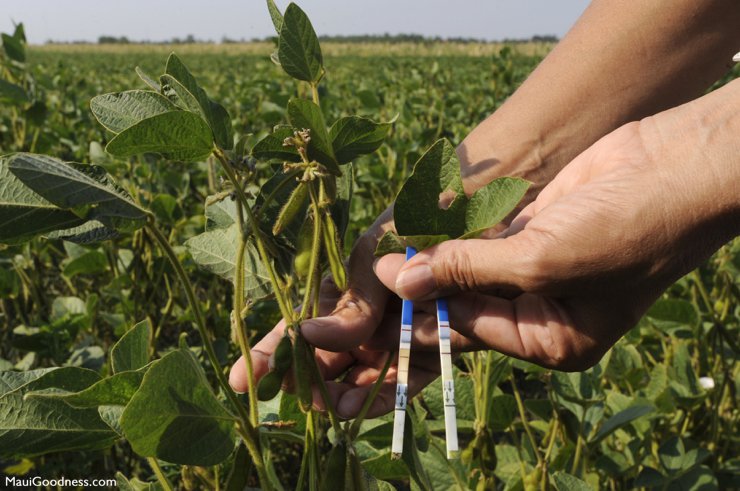
Regardless, Europe and a handful of other countries around the world—including Japan and Australia—require GMOs to be labeled, while 300 regions outlaw growing GMOs entirely. Here in the U.S., conversely, GMO foods were not required to be labeled for years. (This, however, is on the cusp of change: In July 2016, Congress passed a GMO food-labelling bill; the White House has been given two years to write it.)
The GMO Controversy
From Bill Maher decrying genetically modified food on his eponymous show to Ralph Nader publicly criticizing Monsanto for their “massive, relentless marketing and harassing litigation campaigns” (among other reasons), opponents of GMOs and the corporate conglomerates that produce them are quick to cite myriad, eminently distressing problems with genetically modified organisms. GMOs aren’t eco-conscious. They may prove to fall in the same category as DDTs—an agricultural and household pesticide, popular in the 1940s, that was shown to have severe environmental and health consequences, including cancer. They’re toxic to livestock; they lead to sterility. As the New York Times reports, anti-GMO public hearings held on the Big Island in 2014 “were dominated by recitations of the ills often attributed to genetically modified organisms: cancer in rats, a rise in childhood allergies, out-of-control superweeds, genetic contamination, overuse of pesticides, the disappearance of butterflies and bees.” And while human health complications remain unverified—with many “scientists” deeming such claims bogus—GMO opponents argue that their concerns with GMOs rest primarily in their potential effect on the environment. (As the World Health Organization puts it, “issues of concern” with GMOs and the environment include “the capability of the GMO to escape and potentially introduce the engineered genes into wild populations; the persistence of the gene after the GMO has been harvested; the susceptibility of non-target organisms (e.g. insects which are not pests) to the gene product; the stability of the gene; the reduction in the spectrum of other plants including loss of biodiversity; and increased use of chemicals in agriculture.”)
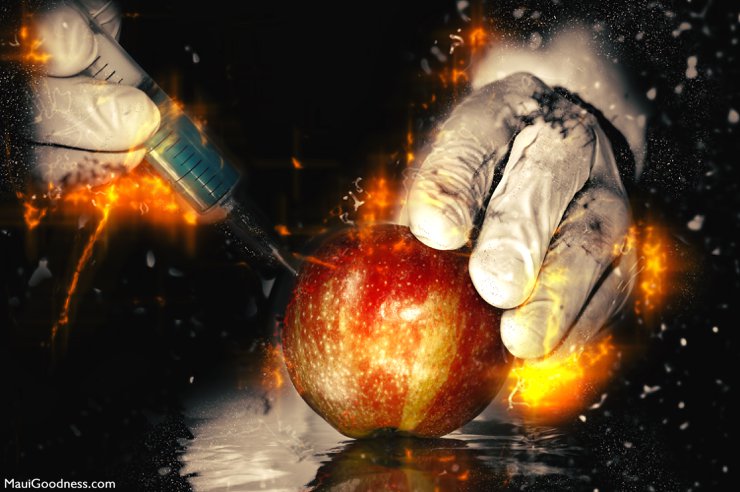
Opponents give many reasons for what make fears of GMO products and boundless mono-crops warranted. Genetic engineering for the purpose of allowing pesticide-soaked crops endurance over poisons in order to kill destructive bugs and weeds begs the question, “is having less-expensive, efficient mono-crops soaked in glyphosate worth the many potential dangers associated with ingestion and close residential proximity to these crops?” Then there’s the controversial behemoth company’s litigation against small farmers, allegedly extinguishing the future for small, organic farms. We can go on for hours, but instead try looking up “Genetic Use Restriction Technology,” ask who made Agent Orange and DDT and then ask who owns the most “seed patents.”
Proponents of GMOs, however, are equally vociferous.
As Today reports, “proponents of GMOs say the genetically tweaked varieties can offer greater crop yields and a chance to enhance the nutritional value of common foods like rice and soybeans,” thus alleviating some of the pressure engendered by the global food supply’s growing demand. And in 2010, Biofortified—which, according to The New York Times, received no funding from industry—listed more than 100 studies, including a comprehensive review sponsored by the European Union, that discovered “no scientific evidence associating GMOs with higher risks for the environment or for food and seed safety than conventional plants and organisms,” thus echoing “similar statements by the World Health Organization” (keep in mind their inclusion of the word “capability” in their assessment of GMOs’ potential environmental impact), “the National Academy of Sciences, the Royal Society of Medicine, and the American Association for the Advancement of Science.” And in 2013, scientists—notably, two Nobel Prize winners—published an OpEd in Science ardently advocating GE foods in a piece titled “Standing Up for GMOs.”

In Hawaii, however—particularly on Maui, Kauai, and the Big Island—the fight against GMOs and the corporate titans that produce them is louder.
Why?
“Hawaii,” The Politic reports, “is the Monsanto’s agricultural center and a frequent testing ground for its new products,” its perennially-warm climate an optimal habitat for developing corn and other crops and to allow researchers “to grow more generations of crops and accelerate their development of new varieties,” says Al Jazeera. As Maui No Ka Oi Magazine reminds us, since Monsanto and the five other largest biotech companies—AgroScience, Dow, BASF, DuPont Pioneer, and Bayer CropScience—launched farms in Hawaii, the 50th state became the “corn belt of the Pacific.”
“In addition to seed corn, the biotech firms now grow transgenic soybeans, sunflowers, cotton, and wheat here. Hawaii’s seed-crop industry (both GMO and conventional) grew by a staggering 548 percent over the last decade. By 2012, it was worth $243 million — triple the value of sugarcane, the state’s next-largest agricultural commodity. Today, the majority of corn planted in the U.S., Argentina, and Brazil originates on Monsanto’s 3,500 acres on Maui and Molokai.” Maui No Ka Oi Magazine
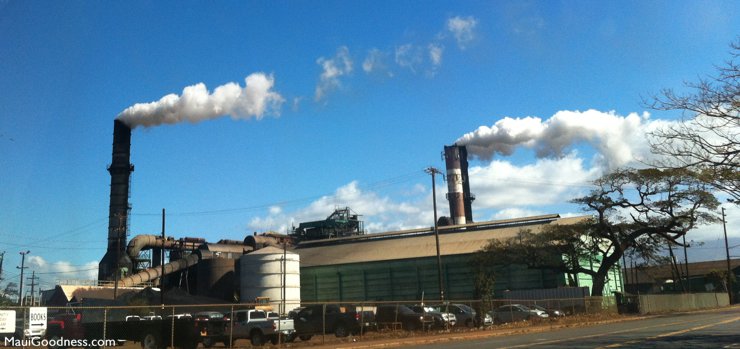
Despite the economic windfall this fact has had on Hawaii residents—Monsanto, for example, employs approximately 1,000 people on Maui, Molokai, and Oahu—GMOs and Monsanto’s work is frequently linked to biological contamination of conventional and wild plants and harm to animals.
In response, the anti-GMO SHAKA (Sustainable Hawaiian Agriculture for the Keiki and ‘Aina) Movement was formed nearly a decade ago; in 2014, the organization gained both criticism and praise by leading the first voter-approved initiative to outlaw the “cultivation, growth or testing of genetically engineered crops until scientific studies determined their safety and benefits,” said The Maui News.
On the ballot for Maui County voters, their “Maui County Genetically Modified Organism Moratorium Initiative,” however, was ruled invalid by Federal District Court Judge Susan Oki Molloway, who, The Encyclopedia of American Politics reports, “decided that the initiative was preempted by state and federal law” and that the “county overstepped its authority by banning GMOs.” But, as Al Jazeera also says, “The judge stressed that her ruling addresses only the legal question of county authority. ‘No portion of this ruling says anything about whether GE organisms are good or bad or about whether the court thinks the substance of the ordinance would be beneficial to the county,’ she said.” Nevertheless, as the Huffington Post put it, “Maui now has the dubious distinction of being the only county or state in the nation in which a publicly passed ballot initiative was blocked by a federal court.” Makes you think…
As anticipated, the response has been staggered. George Kimball—a senior attorney for the Center For Food Safety who advocated for the bans—said, “We will continue to stand and fight with the people of Hawaii against these chemical companies, and part of that is going to be demanding action at the state level to protect the people and the environment…We’re considering all legal options, including appeal.” Monsanto, on the other hand, replied to the overruling by stating that their commitment “to an ongoing dialogue with our neighbors doesn’t stop today,” asserting that they’ve listened and heard “the concern some people have about GMOs and today’s farming practices.” Dennis Gonsalves, meanwhile—a Hawaiian-born plant pathologist, former researcher at Cornell University, and 2000 Humboldt Prize award winner for the most significant contribution to United States agriculture in five years—remains a passionate advocate of genetically modified organisms, having saved what became known as the “Rainbow Papaya” from extinction in the mid-‘90s when he and a team of scientists from academic institutions endowed the virus-infected Big Island fruit with, the New York Times reports, “a gene from the virus itself that gave it immunity” and thus became a model “for how technology could benefit small farmers.”
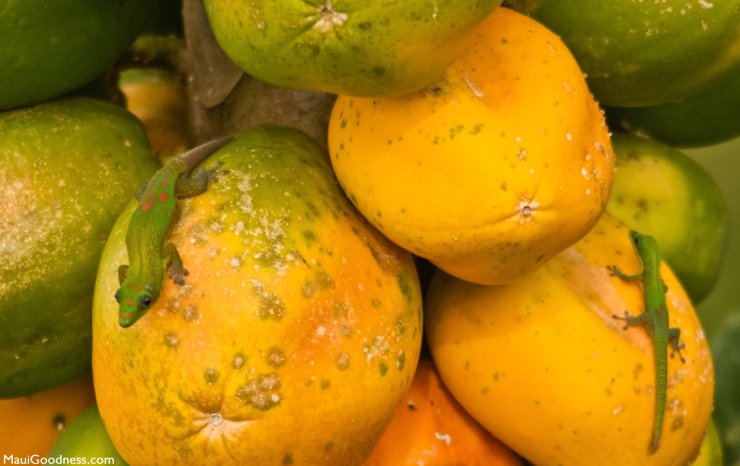
Wherever one might stand on the GMO wars—and despite The Maui News’ grim 2016 headline pronouncing the island’s anti-GMO law “effectively dead” (noting that there will be no further appeals to get the 2014 moratorium approved)—the march against Monsanto, its brethren, and GMOs in general remains far from over.
Given that the overruling places the responsibility of Maui’s GMO seed corn in the hands of the state, SHAKA’s Mark Sheehan, a plaintiff in the appeal against Molloway, called for “exercising that authority” over commercial GMO farming through closer work with the state’s Health and Agricultural Departments.
“‘This new groundbreaking precedent will reshape and reform the entire political and environmental landscape against the scourge of genetic pollution and pesticide pollution throughout our nation,” a statement form SHAKA said, The Maui News reports. “‘SHAKA Movement states that by no means is this ruling a setback or loss in any way. We and the over 20,000 citizens of Maui who voted for the GMO crop moratorium believe in the Hawaii State Constitution and will continue our efforts to ensure the public trust doctrine is honored as the rule of our lands.’”
That said, Alexander & Baldwin—whose 32,000-acre sugarcane plantation closed in 2017—is set to increase GMO crop-growing on Maui as part of their “diversified agriculture” plan. Meanwhile, in 2016, SHAKA unveiled two bills, one of which would seek to turn the island’s former sugarcane acreage into “public agricultural lands,” effectively weeding out—no pun intended—GMO crops. And Alika Atay of the SHAKA Movement told Maui No Ka Oi Magazine, “Akua [gods] gifted us with this place. For thousands of years Hawaiians didn’t just survive here, we thrived…All I’m saying is, back up. Pause. Can you achieve what you want without polluting our resources? Prove to me GMOs cause no harm”—reiterating an outlook that’s widely felt across Hawaii.
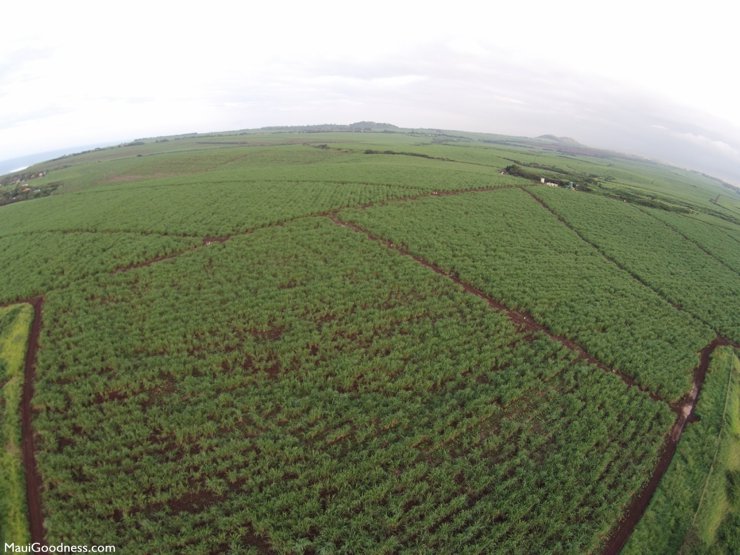
In the wake of the overruling, anti-GMO Maui residents feel helpless. But perhaps Maui No Ka Oi Magazine’s Shannon Wianecki put it best when she reminded us that what we do have control over is our knowledge on the subject: “Regardless of the fate of Maui County’s GMO moratorium, biotechnology is already part of our lives. We owe it to ourselves to study up.”
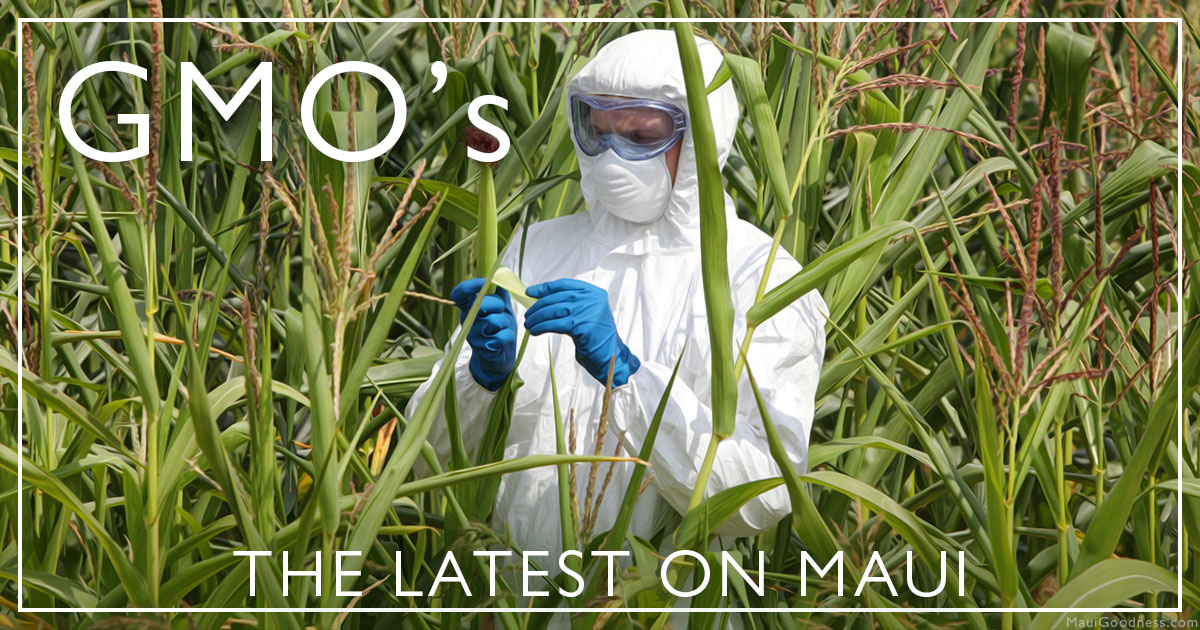

You all are morons if you think gmo has just arrived. I pray for Hawaii. Don’t hate, I’m with you. We need to fight together.
Say no!
GMOS has GLASPHYTE POSION IN THE SEEDS — GMOS SHOULD BE BANNED ACROSS THE UNITED STATES, I CAN CARE LESS HOW MUCH MANSANTO EMPLOYEES – YOURS LIVES ARE IN DANGER!!! ALTERED DNA SHOULD SEN RED FLAGS TO EVERYONE!!